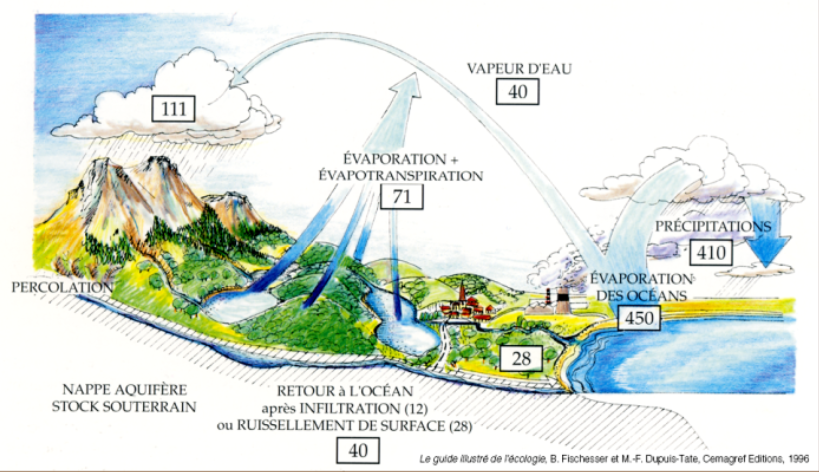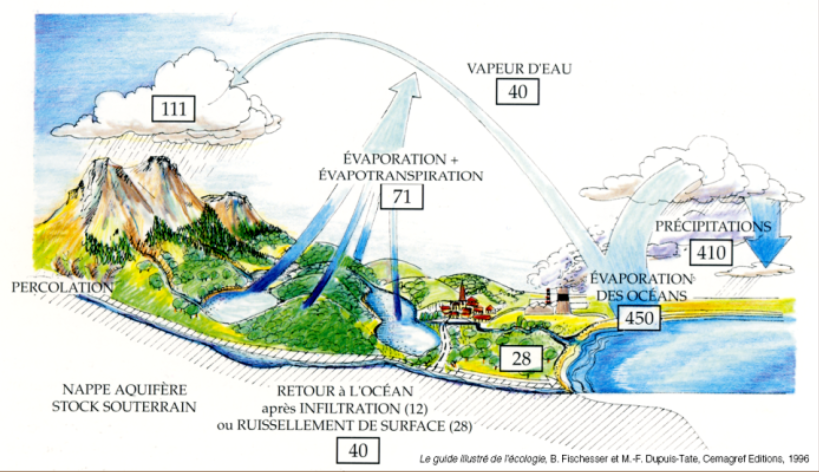The role of trees in water circulation
In a context of important decrease in water resources and pollution of all kinds, there are many concerns around the question of water conservation and its quality. Yet, forests participate to water cycle and play a real part for resource conservation.
The place of forest in the water cycle
Where are forest in water cycle ? What we learned at school, is that water change of form when precipitation falls, with evaporation (in addition of evapo-transpiration resulting of vegetation and thus from trees) and movement of water vapour. Forest participate to this cycle while contributing to evaporation of water they receive, particularly from precipitations, at the heart of territories.

During this cycle, water can also be stocked more or less time in the soils to form underground reserves, named aquifer like groundwater. As we shall go on to examine, forest contributes to create reserves of fresh and potable water stored underground.
Water balance in forest
If we take a closer look at the principles we just cited, trees play several roles in global water cycle. The term water balance is used, including inflow (precipitations, capillary rise from groundwater, runoff water), and outgoing flow, which includes 3 principal phenomenons constituent evapo-transporation :
- Trees sweat thanks to their leaves (already mentioned in a precedent article)
- With their foliage, trees intercept rain, which contributes to direct evaporation of this water
- Then we add the phenomenon ofsoil evaporation and of the shrub layer.
In addition, the very presence of trees is favourable to circulating water in forest, to water storage in the soils :
- Trees slow water arriving on the soil after precipitation (dripping, water flow along the trunks) ;
- Trees shade reduce soil evaporation
- The forest litter at the foot of trees and their roots slow and reduce the water run-off toward downstream, in favour of a drainage and water storage in the soil.

Indeed, trees drain water under their roots : under the location characteristics, those various flows will eventually replenish the groundwater. This draining is helped by porosity and roughness of soils : this the infiltration in the aquifers is boosted, at the surface water run-off's expense.
In addition to foster the drainage, forest greatly reduce the debit of gloods, thanks to mechanisms we just cited : interception, water transpiration and infiltration.
The observations we have just presented constitutes only a part of the total range of the co-benefits rendered by forest in respect of water ressource. We will discuss in upcoming articles the trees role on water quality, in particular the water that coms out of the tap !

